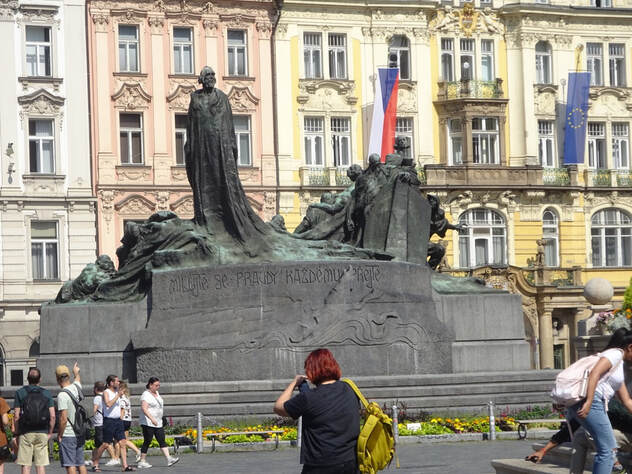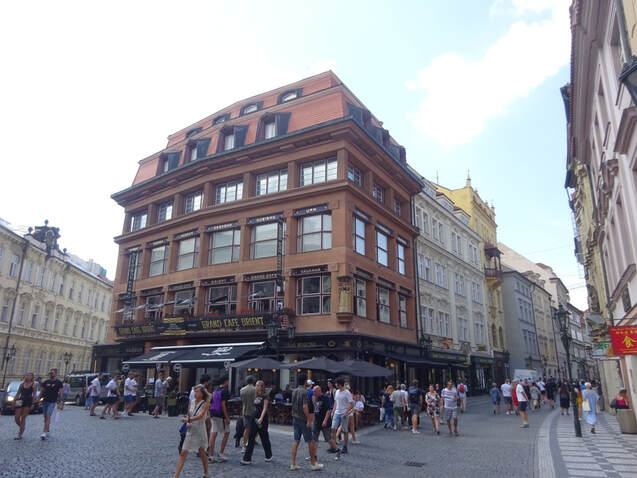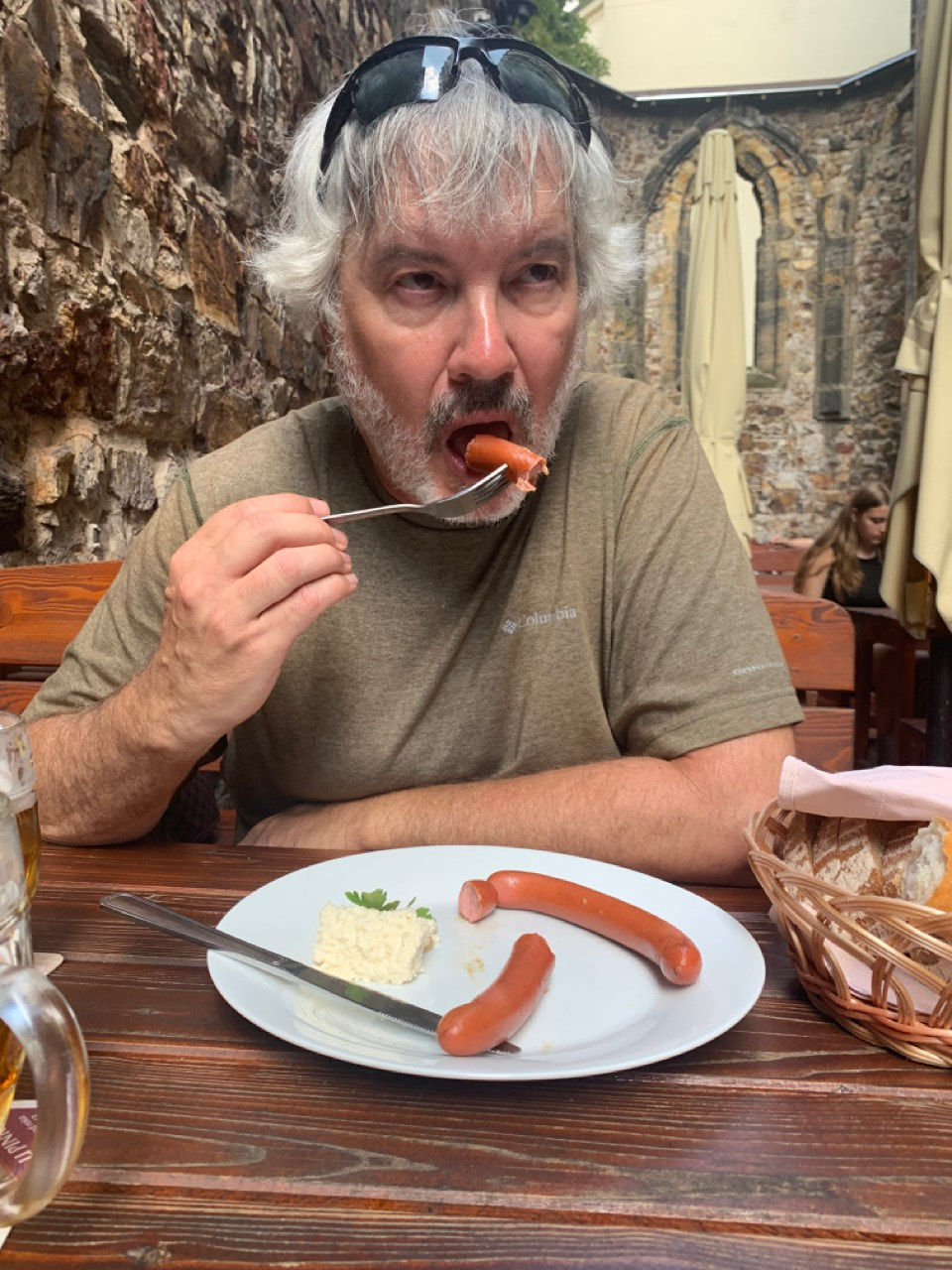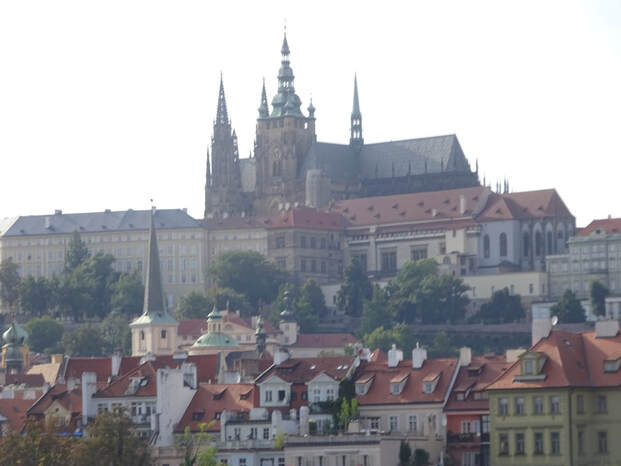"Prague is the capital and largest city in the Czech Republic. On the Vltava river, Prague is home to about 1.3 million people and a political, cultural, and economic hub of central Europe, with a rich history and Romanesque, Gothic, Renaissance and Baroque architectures. It was the capital of the Kingdom of Bohemia and residence of several Holy Roman Emperors, most notably Charles IV (r. 1346–1378).
It was an important city to the Habsburg monarchy and Austro-Hungarian Empire. The city played major roles in the Bohemian and the Protestant Reformations, the Thirty Years' War and in 20th-century history as the capital of Czechoslovakia between the World Wars and the post-war Communist era.
Prague is home to a number of well-known cultural attractions, many of which survived the violence and destruction of 20th-century Europe. Main attractions include Prague Castle, Charles Bridge, Old Town Square with the Prague astronomical clock, the Jewish Quarter, Petřín hill and Vyšehrad. Since 1992, the historic center of Prague has been included in the UNESCO list of World Heritage Sites.
The city has more than ten major museums, along with numerous theaters, galleries, cinemas, and other historical exhibits. An extensive modern public transportation system connects the city. It is home to a wide range of public and private schools, including Charles University in Prague, the oldest university in Central Europe.
In 2019 the PICSA Index ranked the city as 13th most livable city in the world. Its rich history makes it a popular tourist destination and as of 2017, the city receives more than 8.5 million international visitors annually. In 2017, Prague was listed as the fifth most visited European city after London, Paris, Rome, and Istanbul."
Old Town Hall, begun in the 14th century with adoption of an existing manor, with additions over the years. The tower is from 1364. Other works were constructed into the 19th century.
It was an important city to the Habsburg monarchy and Austro-Hungarian Empire. The city played major roles in the Bohemian and the Protestant Reformations, the Thirty Years' War and in 20th-century history as the capital of Czechoslovakia between the World Wars and the post-war Communist era.
Prague is home to a number of well-known cultural attractions, many of which survived the violence and destruction of 20th-century Europe. Main attractions include Prague Castle, Charles Bridge, Old Town Square with the Prague astronomical clock, the Jewish Quarter, Petřín hill and Vyšehrad. Since 1992, the historic center of Prague has been included in the UNESCO list of World Heritage Sites.
The city has more than ten major museums, along with numerous theaters, galleries, cinemas, and other historical exhibits. An extensive modern public transportation system connects the city. It is home to a wide range of public and private schools, including Charles University in Prague, the oldest university in Central Europe.
In 2019 the PICSA Index ranked the city as 13th most livable city in the world. Its rich history makes it a popular tourist destination and as of 2017, the city receives more than 8.5 million international visitors annually. In 2017, Prague was listed as the fifth most visited European city after London, Paris, Rome, and Istanbul."
Old Town Hall, begun in the 14th century with adoption of an existing manor, with additions over the years. The tower is from 1364. Other works were constructed into the 19th century.
The Church of Mother of God before Týn is a Gothic church and a dominant feature of the Old Town of Prague. It has been the main church of this part of the city since the 14th century. The church's two towers are 80 meters high, and each tower's spire is topped by eight smaller spires in two layers of four.
The Church of Saint Nicholas is a Late-Gothic and Baroque church in the Old Town. It was built between 1732-1737 on the site of a Gothic church from the 13th century, which was also dedicated to Saint Nicholas.
Jan Hus Monument on the Old Town Square - Jan Hus (c. 1370 – 6 July 1415) was a Czech theologian and philosopher who became a Church reformer and the inspiration of Hussitism, a key predecessor to Protestantism, and a seminal figure in the Bohemian Reformation.
The Prague astronomical clock is a medieval astronomical clock attached to the Old Town Hall. The clock was first installed in 1410, making it the third-oldest astronomical clock in the world and the oldest clock still in operation.
From a mosaic ceiling...
The Powder Tower (see left photo below) is one of the original 13 city gates in Old Town. Its construction began in 1475. The tower was intended to be an attractive entrance into the city, instead of a defensive tower. The gate was used to store gunpowder in the 17th century, hence the name Powder Tower or Powder Gate. The gate suffered considerable damage during the 1757 Battle of Prague.
Looking up the boulevard to the National Museum - a Czech museum institution founded in 1818 and intended to systematically establish, prepare, and publicly exhibit natural scientific and historical collections.
The National Museum houses nearly 14 million items from the areas of natural history, history, arts, music and librarianship, which are located in dozens of museum buildings. The main building of the National Museum has been renovated in 2011–2019, and permanent exhibitions are gradually being opened from Spring 2020.
The National Museum houses nearly 14 million items from the areas of natural history, history, arts, music and librarianship, which are located in dozens of museum buildings. The main building of the National Museum has been renovated in 2011–2019, and permanent exhibitions are gradually being opened from Spring 2020.
Adjacent to the National Museum is this: Rick Steves: "out-of-place modern structure (combining a 1930s core with a 1960s shell) once housing the rubber-stamp Czechoslavak Parliament back when it voted lock-step with Moscow. Between 1994 and 2008 it housed Radio Free Europe, and then became the New National Museum later.
David Černý sculpture of the duke of Bohemia (921-935CE) Saint Wenceslas, 1999, hangs in the Lucerna Passage above viewers’ heads as a subversive icon of the Czech Republic’s social and political histories.
We had no idea, "until we developed the film", the Pope was waving out to us as we admired this statue of a saint.
We happened upon a brewery beer garden on the grounds of an old church - pilsners and pork wieners yum.
Some people were sitting at the foot of these columns and gravel began falling on them from high above - they quickly moved to a safer spot.
Then we headed back to the Old Town Square and found another brewery with some interesting history.
"Peace Out Man."
Prague Castle as viewed from the Old Town side of the River Vltava - we'll do this tour in the coming days.
From Wikipedia, the photo below shows our next point of interest: Charles Bridge
Free usage of the photo, no need to ask for approval. Simply attribute the author: «A.Savin, WikiCommons».
Charles Bridge is a medieval stone arch bridge that crosses the River Vltava. Its construction started in 1357 and finished in the early 15th century. The bridge replaced the old Judith Bridge built 1158–1172 that had been badly damaged by a flood in 1342. This new bridge was originally called Stone Bridge or Prague Bridge, but has been referred to as "Charles Bridge" since 1870.
As the only means of crossing the River Vltava until 1841, Charles Bridge was a most important connection between Prague Castle and the city's Old Town and adjacent areas. The bridge is 516 metres (1,693 ft) long and nearly 10 metres (33 ft) wide. Following the example of the Stone Bridge in Regensburg, it was built as a bow bridge with 16 arches shielded by ice guards. It is protected by three bridge towers, two on the Lesser Quarter side (including the Malá Strana Bridge Tower) and one on the Old Town side, the Old Town Bridge Tower. The bridge is decorated by a continuous alley of 30 statues and statuaries, most of them baroque-style, originally erected around 1700, but now all have been replaced by replicas.
The bridge is currently undergoing a twenty-year process of structural inspections, restoration, and repairs. The process started in late 2019, and is expected to cost 45–60 million CZK (US$1.9–2.6 million).
As the only means of crossing the River Vltava until 1841, Charles Bridge was a most important connection between Prague Castle and the city's Old Town and adjacent areas. The bridge is 516 metres (1,693 ft) long and nearly 10 metres (33 ft) wide. Following the example of the Stone Bridge in Regensburg, it was built as a bow bridge with 16 arches shielded by ice guards. It is protected by three bridge towers, two on the Lesser Quarter side (including the Malá Strana Bridge Tower) and one on the Old Town side, the Old Town Bridge Tower. The bridge is decorated by a continuous alley of 30 statues and statuaries, most of them baroque-style, originally erected around 1700, but now all have been replaced by replicas.
The bridge is currently undergoing a twenty-year process of structural inspections, restoration, and repairs. The process started in late 2019, and is expected to cost 45–60 million CZK (US$1.9–2.6 million).
We see from the bridge a race between a paddle boat and a gondola.
Taking advantage of their selfie pose, we snapped our own picture
Ending the day at Letná Lookout Beer Garden, after taking the transit along the Castle side of the river, we get views of Old Town from the north.



































































 RSS Feed
RSS Feed
